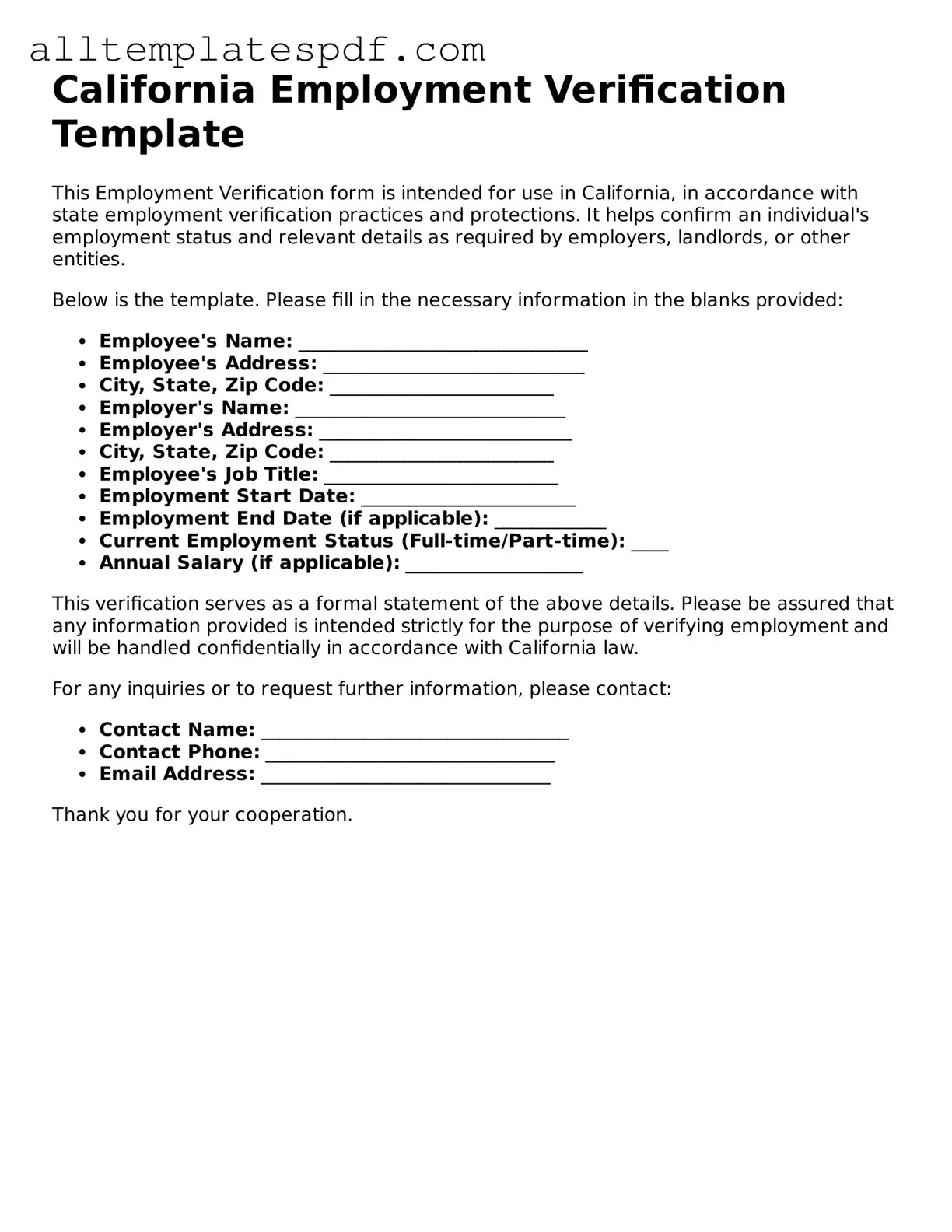Filling out the California Employment Verification form can be straightforward, but many individuals make common mistakes that can lead to delays or complications. One frequent error is providing incomplete information. When sections of the form are left blank, it can create confusion for the employer or the verifying agency. Ensuring that all applicable fields are filled out completely is essential for a smooth verification process.
Another mistake often seen is incorrect dates of employment. Applicants sometimes misremember when they started or ended their employment, which can lead to discrepancies. It is important to double-check these dates against official records to ensure accuracy.
People also sometimes fail to include job titles or descriptions. This information helps the verifier understand the nature of the work performed. Without it, the verification may lack context, making it harder for employers to assess qualifications or experiences.
Additionally, not providing the correct contact information for previous employers can hinder the verification process. If a verifier cannot reach the previous employer due to outdated or incorrect contact details, it can result in delays or even denial of employment opportunities.
Some individuals overlook the importance of signing and dating the form. A signature is often required to validate the information provided. Neglecting this step can render the form incomplete, requiring resubmission.
Another common oversight is failing to review the form for accuracy before submission. Typos or errors can easily slip through the cracks. Taking a moment to proofread can prevent unnecessary complications later.
People may also forget to provide supporting documentation, such as pay stubs or tax forms, when required. These documents can serve as proof of employment and bolster the verification process. Without them, the verification may be less credible.
In some cases, individuals do not understand the privacy implications of the form. It is crucial to know what information is being shared and to whom. Being informed helps maintain control over personal data.
Lastly, failing to follow up after submitting the form can lead to missed opportunities. Checking in with the employer or verification agency can ensure that the process is moving forward and that any potential issues are addressed promptly.
